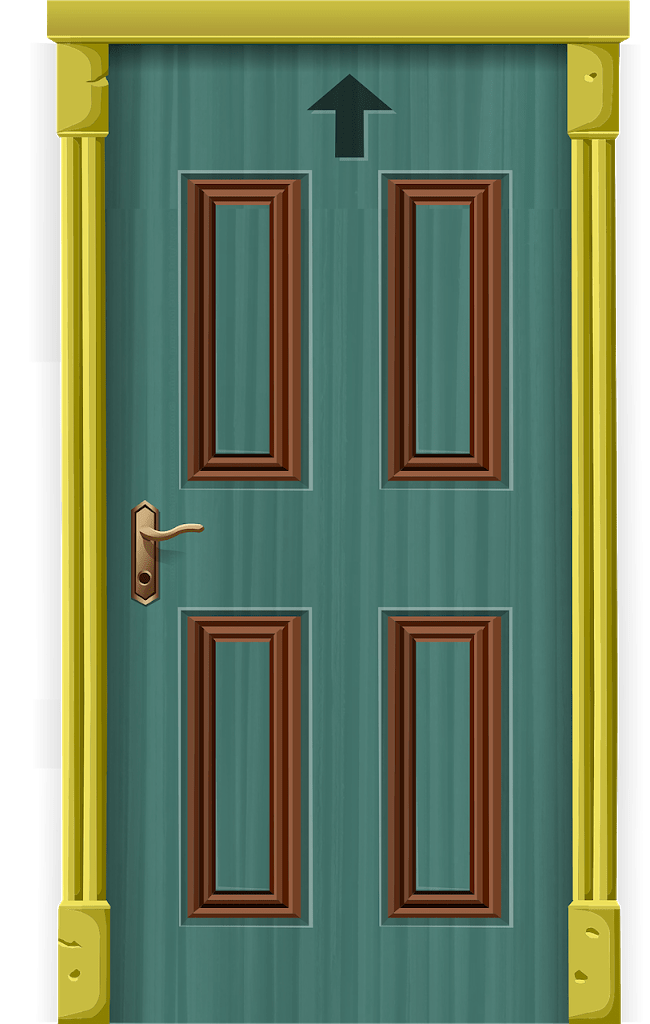When designing or renovating a space, doors play an important role in both functionality and aesthetics. The right type of door not only enhances the look of your home or office but also provides privacy, security, and insulation. With so many types of doors available, it is essential to select one that suits your needs. In this article, I’m going to share with you the different types of doors, their benefits, and where they work best.
9 Different Types of Doors
Following are the 9 different types of doors and are as follows:
- Wooden Doors
- Glass Doors
- Steel Doors
- Fiberglass Doors
- Sliding Doors
- French Doors
- Pocket Doors
- Flush Doors
- Louvered Doors
1. Wooden Doors
Wooden doors are the most traditional and popular type of door, known for their classic and warm aesthetic. They are versatile, customizable, and can fit into almost any interior or exterior design.
- Advantages:
- Excellent insulation properties
- Natural, timeless appeal
- Strong and durable when properly maintained
- Can be customized with paint or finishes
- Disadvantages:
- Requires regular maintenance (painting, sealing)
- Can warp or swell due to moisture
Best suited for: Front entrances, bedrooms, and living rooms.
2. Glass Doors
Glass doors bring in natural light and add a modern, elegant touch to interiors. While they are often used for aesthetic purposes, advancements in glass technology ensure they are secure and energy efficient.
- Advantages:
- Allows natural light to flow between spaces
- Creates an illusion of larger spaces
- Can be frosted, tinted, or laminated for privacy
- Disadvantages:
- Can be expensive
- Requires frequent cleaning
- Prone to breakage if not reinforced
Best suited for: Offices, patios, balconies, and modern living spaces.
3. Steel Doors
Steel doors are synonymous with security and strength. They are often used in areas where safety is a priority, such as front entrances or warehouses.
- Advantages:
- Extremely strong and durable
- Offers excellent security
- Resistant to fire, cracking, and warping
- Disadvantages:
- Can be prone to rust without proper maintenance
- Limited design options compared to wood or glass
Best suited for: Exterior doors, commercial properties, or garages.
4. Fiberglass Doors
Fiberglass doors are becoming increasingly popular due to their durability and low maintenance. These doors mimic the appearance of wood but come without the drawbacks of warping or cracking.
- Advantages:
- Resistant to extreme weather conditions
- Energy-efficient with good insulation
- Low maintenance
- Can mimic the look of wood
- Disadvantages:
- Limited design variety compared to wood
Best suited for: Exterior doors in homes, especially in areas with harsh weather conditions.
5. Sliding Doors
Sliding doors are perfect for spaces that require easy access and a seamless indoor-outdoor flow. These doors glide along a track and are often used for patios, gardens, and closet spaces.
- Advantages:
- Saves space (no door swing)
- Ideal for creating a modern look
- Easy access to outdoor areas
- Disadvantages:
- Limited design flexibility
- Can be difficult to insulate and secure
Best suited for: Patios, closets, and contemporary living spaces.
6. French Doors
French doors are a pair of hinged doors that typically open outwards. They often feature glass panels and are known for their elegant and classic appearance.
- Advantages:
- Adds a sophisticated, timeless look
- Lets in natural light while maintaining separation between rooms
- Enhances indoor-outdoor connectivity
- Disadvantages:
- Requires space for doors to swing open
- Not ideal for security without proper locks
Best suited for: Living rooms, garden entrances, and balconies.
7. Pocket Doors
Pocket doors slide into the wall, disappearing completely when open. They are an excellent choice for small spaces or for adding a modern, minimalistic look to a room.
- Advantages:
- Saves floor space
- Creates a clean, minimalist look
- Ideal for small rooms
- Disadvantages:
- Can be challenging to install
- Limited in style options
Best suited for: Bathrooms, closets, and small rooms.
8. Flush Doors
Flush doors are simple, flat-panel doors with a smooth surface. They are commonly used in modern homes and commercial spaces due to their affordability and sleek look.
- Advantages:
- Affordable and easy to maintain
- Smooth, clean design
- Can be made from wood, metal, or composite materials
- Disadvantages:
- Lack of decorative appeal compared to paneled doors
- Can feel less sturdy depending on material
Best suited for: Interior rooms, such as bedrooms and bathrooms.
9. Louvered Doors
Louvered doors feature horizontal slats that allow air to pass through while providing privacy. They are commonly used in closets and utility rooms where ventilation is essential.
- Advantages:
- Allows for airflow
- Prevents moisture buildup in enclosed spaces
- Adds a decorative touch
- Disadvantages:
- Limited privacy due to slats
- Requires regular cleaning of slats
Best suited for: Closets, laundry rooms, and bathrooms.
Also Read: Best Door Design in 2024 – Modern and Classic











